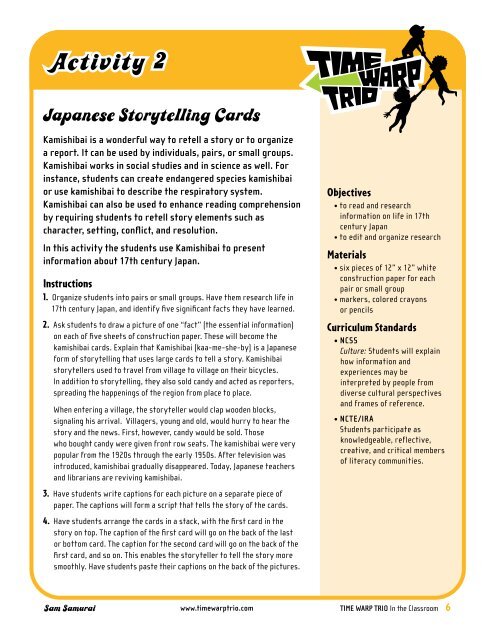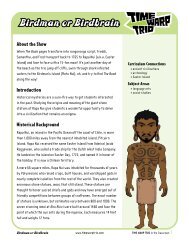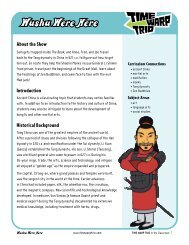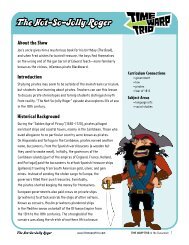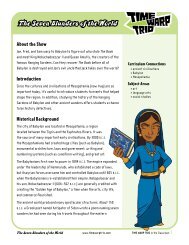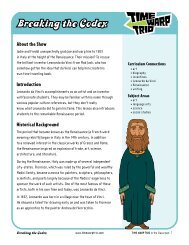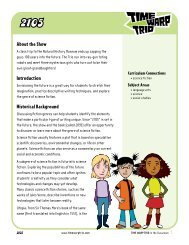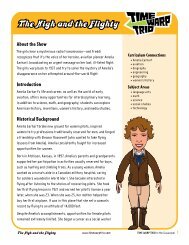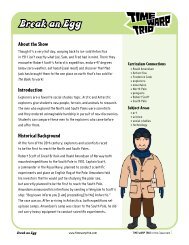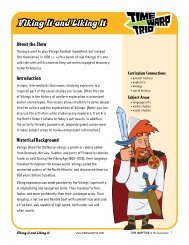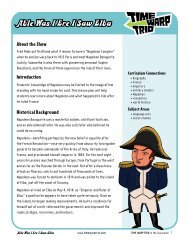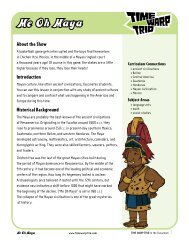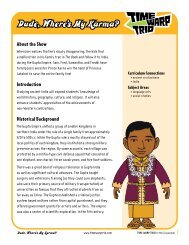Sam Samurai - Time Warp Trio
Sam Samurai - Time Warp Trio
Sam Samurai - Time Warp Trio
You also want an ePaper? Increase the reach of your titles
YUMPU automatically turns print PDFs into web optimized ePapers that Google loves.
Activity 2<br />
Japanese Storytelling Cards<br />
Kamishibai is a wonderful way to retell a story or to organize<br />
a report. it can be used by individuals, pairs, or small groups.<br />
Kamishibai works in social studies and in science as well. For<br />
instance, students can create endangered species kamishibai<br />
or use kamishibai to describe the respiratory system.<br />
Kamishibai can also be used to enhance reading comprehension<br />
by requiring students to retell story elements such as<br />
character, setting, conflict, and resolution.<br />
in this activity the students use Kamishibai to present<br />
information about 17th century Japan.<br />
Instructions<br />
. Organize students into pairs or small groups. Have them research life in<br />
17th century Japan, and identify five significant facts they have learned.<br />
. Ask students to draw a picture of one “fact” (the essential information)<br />
on each of five sheets of construction paper. These will become the<br />
kamishibai cards. Explain that Kamishibai (kaa-me-she-by) is a Japanese<br />
form of storytelling that uses large cards to tell a story. Kamishibai<br />
storytellers used to travel from village to village on their bicycles.<br />
In addition to storytelling, they also sold candy and acted as reporters,<br />
spreading the happenings of the region from place to place.<br />
When entering a village, the storyteller would clap wooden blocks,<br />
signaling his arrival. Villagers, young and old, would hurry to hear the<br />
story and the news. First, however, candy would be sold. Those<br />
who bought candy were given front row seats. The kamishibai were very<br />
popular from the 1920s through the early 1950s. After television was<br />
introduced, kamishibai gradually disappeared. Today, Japanese teachers<br />
and librarians are reviving kamishibai.<br />
. Have students write captions for each picture on a separate piece of<br />
paper. The captions will form a script that tells the story of the cards.<br />
4. Have students arrange the cards in a stack, with the first card in the<br />
story on top. The caption of the first card will go on the back of the last<br />
or bottom card. The caption for the second card will go on the back of the<br />
first card, and so on. This enables the storyteller to tell the story more<br />
smoothly. Have students paste their captions on the back of the pictures.<br />
<strong>Sam</strong> <strong>Sam</strong>urai<br />
www.timewarptrio.com<br />
Objectives<br />
• to read and research<br />
information on life in 17th<br />
century Japan<br />
• to edit and organize research<br />
Materials<br />
• six pieces of 12” x 12” white<br />
construction paper for each<br />
pair or small group<br />
• markers, colored crayons<br />
or pencils<br />
Curriculum Standards<br />
• NCSS<br />
Culture: Students will explain<br />
how information and<br />
experiences may be<br />
interpreted by people from<br />
diverse cultural perspectives<br />
and frames of reference.<br />
• NCTe/ira<br />
Students participate as<br />
knowledgeable, reflective,<br />
creative, and critical members<br />
of literacy communities.<br />
<strong>Time</strong> <strong>Warp</strong> <strong>Trio</strong> In the Classroom 6


